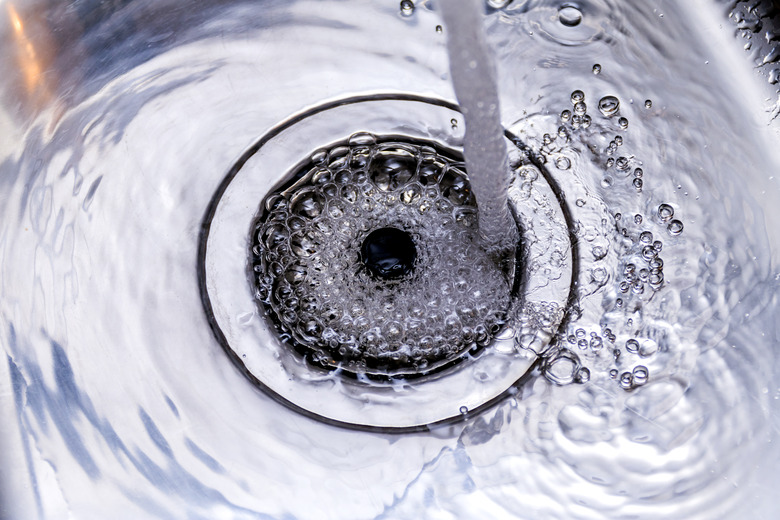Differences Between Red Devil Lye And Roebic Crystal Drain Opener
We may receive a commission on purchases made from links.
Lye, also known as caustic soda or sodium hydroxide, is used for many things, including energy production, water treatment, soapmaking and cleaning products. It may be best known for its use as a drain cleaner, and Red Devil Lye is one well-known version. Roebic Crystal Drain Opener is another brand of drain cleaner that is made with lye.
About Red Devil Lye
About Red Devil Lye
Red Devil Lye was manufactured by Reckitt Benckiser as a household drain cleaner product. It reacted with grease, and it created a soap-like material that dissolved in water. Red Devil Lye was strong enough to break down proteins in hair and other substances, and it actually generated heat that helped with the drain cleaning.
This product was made of 100 percent pure sodium hydroxide and was sold as a drain cleaner. However, home soapmakers started using it for their lye-based soaps. This is because soap is made by mixing lye with fats, and at the time, many soap recipes required Red Devil Lye.
Trouble With the Law
Trouble With the Law
Red Devil Lye was sold for more than 100 years, and it was not marked for any particular use. In addition to its use by home soapmakers, Red Devil Lye was popular as a key ingredient used in illegal meth labs. As time passed, its caustic and hazardous properties and widespread misuse became better known to the public.
In 2005, the U.S. Food and Drug Administration stepped in. After looking at all the potential dangers and problems with Red Devil Lye, they required that Reckitt Benckiser stop selling it.
About Roebic Crystal Drain Opener
About Roebic Crystal Drain Opener
Roebic Laboratories manufactures Roebic Crystal Drain Opener, which is used for more commercial purposes. The company's products are targeted for sewage disposal systems. Like Red Devil Lye, Roebic Crystal Drain Opener is also made from 100 percent sodium hydroxide.
Roebic's lye product is still sold today because it has specific commercial labeling. It is only marketed to retailers that sell commercial-use products to consumers. The label states that it is professional strength and cleans clogs from pipes, helping to keep drains clear.
Lye Used in Soapmaking
Lye Used in Soapmaking
Soapmakers still use lye to make soap, and some websites suggest using Roebic Crystal Drain Opener for this purpose. When lye is used in soapmaking, it has to be 100 percent sodium hydroxide. This kind of lye cannot be found in grocery stores, but hardware stores and plumbing stores may carry it.
You can also get 100 percent sodium hydroxide lye from online retailers like Amazon and eBay. For best results, soapmakers may want to purchase it from vendors who sell the lye exclusively for this purpose. Lye can also be used to make candles, clean out beehives, cure food and dehair animal hides. Experts say that drain cleaners should never be used to make soap and should never be used for these other activities.
Since lye is a corrosive, hazardous substance, it can be harmful to the eyes and skin, and eating it can be fatal. Anyone working with lye should wear long, protective gloves, safety goggles and sturdy, thick shoes. Working surfaces should also be protected, as lye can burn through materials. Other safety precautions include adequate ventilation, mixing the lye in a sink and having vinegar on hand to neutralize the lye.
